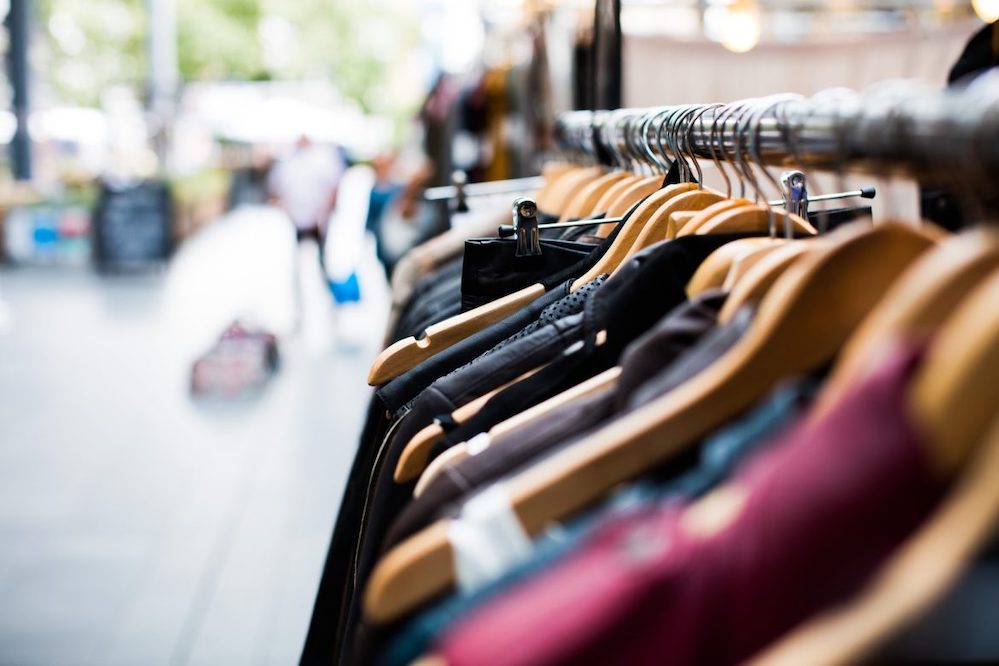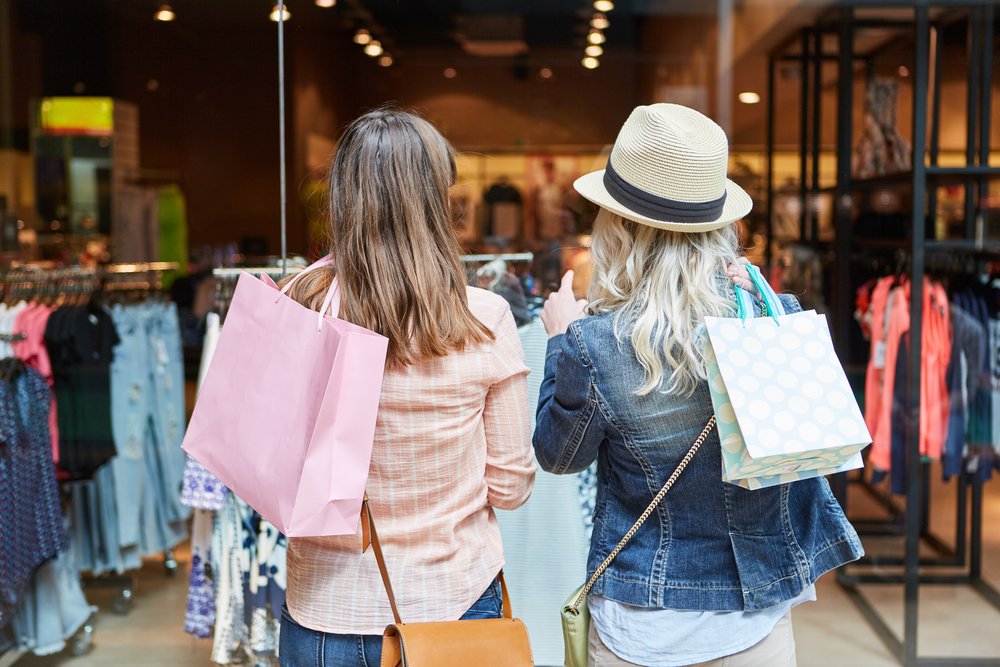Achieving success in a crowded and fast-moving market like fashion retail is all about adapting to customer expectations and staying focused on differentiating your brand and experience. The leading fashion retailers in 2022 are investing in technology to help them cover these bases both on their owned channels and on their performance marketing channels such as Google Shopping. Here’s our list of the top 10 fashion retailers to watch and learn from.
ASOS
One of the undisputed leaders of online fashion retail, ASOS has become synonymous with brilliant user experience design. Key information is kept above the fold on every product page, using a great economy of images to keep pages clean while allowing shoppers to access high-quality product descriptions at the click of a button.
This mobile-optimised design is supported by search engine optimisation that consistently helps individual product pages rank, making it easier to find and browse products on a range of platforms. This is thanks to the quality of product data behind each listing, which allows search engines to understand their relevance and rank them higher for high-conversion search terms.
Google Shopping is an important channel for ASOS and they understand that visitors who click on Shopping ads tend to have a stronger intent to buy than normal text ads.
Speed to market plays a key role in ASOS’s success, too, with strong distribution links set up internationally so that it can even sometimes be faster than domestic deliveries. There is technology in the market now that is significantly speeding up the rate of transactions on Google Shopping. The retailer is also investing in smart implementations of advanced software like visual searching tools to enable customers to find products in a new and intuitive way.
Zara
One of the UK’s most valuable fashion retailers, Zara’s adoption of ecommerce as a part of its core strategy has been key to its success.
Offering all that you need to know about a product with a single look is one of the greatest strengths of their user design. Product descriptions, size options, price and more are always kept on screen, with the scroll functioning to run through a slideshow of images on the side.
Convenience is another selling point with a “What’s my size?” feature and in-store availability checkers breaking the barriers of uncertainty that might stop a shopper from clicking forward.
The retailer’s parent company, Inditex, reported FY18 revenues of €26.15 billion and online sales growth of 27% to €3.2 billion, representing 12% of net sales. This represents an impressive combination of scale and continued growth, as Inditex continues to emphasise the increased availability of its collections across channels and regions.
Zara has a strong SEO presence which means a great website authority score that ensures that relevant items are visible to potential customers searching on Google.
Boohoo
Another online retailer that focuses on the evocative nature of great fashion photography to grab audience attention, product imagery takes up 50% of the screen at any time on Boohoo. Colour variants are quickly displayed at a glance, while the other half of the screen remains dedicated to fantastic product descriptions.
These descriptions are “style notes” as opposed to traditional product descriptions. This mixture of description with fashion tips talks directly to customer needs while playing up the strength of each item.
Boohoo understands the importance of Google Shopping (after all 85% of all product searches start on Amazon or Google) and they use the channel effectively to ensure visibility and compete in this dynamic market.
La Redoute
The mobile world has helped the top online fashion stores become even more disruptive and La Redoute leads the way in showing how mobile eCommerce can be done right. Their site is optimised to look great on a variety of platforms, including mobile devices which now represent the majority of customer traffic to retail sites.
Like Boohoo, it focuses on offering imagery. With plenty of visual real estate above the fold, while just beneath are not only highly detailed product descriptions but also a “Complete the Look” style guide-meets-product recommendation section that encourages further site exploration, complete with colour variant suggestions.
Targeting international markets with Google Shopping Ads makes sense for La Redoute as this often leads to an increased ROAS and reduction in CPC compared to your domestic market. Acquiring traffic through Google Shopping Ads in the United Kingdom is often cheaper – and provides a better Return on Ad Spend than in France.
Nike
There’s little to focus on but the shoes when it comes to Nike’s website, playing to the strength of the products above all else. This is done in part with a unique approach to imagery which displays their products from every angle, achieved with one large multi-panelled image.
Above-the-fold sizing and size guides keep the site convenient to use, with that particular element playing an even more important part in shoe sales compared to other fashion products. All of this means that customers learn more without having to click or navigate quite as much, meaning a shorter route to more sales.
Nike was the first brand from the footwear and apparel industry to join Google’s “Buy on Google” program, which allows e-tailers to sell their products directly on Google, with zero Google commission fees, through their Buy on Google checkout experience, available in the USA.
H&M
Initially slow to make the conversion to online, H&M has recently shifted focus and transformed its web design to make product pages a lot more impactful. Their design has some similarities with their primary competitor, Zara. Colour variations and sizes are kept constant on the right side of the page, while more than half of the screen space is offered to big, high-quality photographs that the user can scroll through.
Product descriptions are tucked just below the fold, written with descriptive copy that helps the customer envision how products might look on them.
Hennes are now investing in Google Shopping, and have combined this with strong SEO to ensure their products are visible through Google search.
Uniqlo
Seen by some commentators as the inheritor of Gap’s market, Uniqlo certainly shares a focus on quality basic everyday apparel items. The Japanese giant is now worldwide, propelled to success internationally by its relentless focus and clear identity. Differentiating from competitors with a price point between fast-fashion and premium brands, the retailer emphasises the technological innovation in its products, aiming to pitch them as durable yet affordable yet clean-cut and stylish.
The balance is nicely struck, and the retailer’s website manages to draw the eye with discounts in the bold brand red but retains a distinctive clean style with squares throughout and plenty of white space. The retailer grew revenues 3% both on and off-line.
Next
The product pages on Next can seem a little dense at first glance, but that’s because the website does a lot to offer customers all the information they need at a single glance. All the essentials are kept above the fold, with drop-down options for size, product variants, and colours.
Size guides and product descriptions are kept highly accessible, with no scrolling needed, just another click to open up that extra information. Local store availability checkers incorporate more buying options, giving customers a customisable buyer experience.
It is Next’s online scale and diversification that ensured the retailer remained profitable in the face of store closures in 2021. The FTSE 100 giant was “well placed to cope with the pandemic”, in its 2021 full-year report, not least because of its extensive online footprint and the diversity of its product base, which meant that the group could respond to changing preferences for online retail as consumers worked from home.
Bonobos
Launched as a pure-play online menswear retailer, Bonobos’ proposition is defined by the service element as much as by its products. In 2007, buying apparel online was much less ingrained as a consumer behaviour. To counter this, Bonobos delivered incredible customer service that other brands and retailers could or could not match. Even today, response times and customer satisfaction remain industry-leading.
Its eCommerce strategy ensures Bonobos remains a wildly popular men’s online shopping boutique. They’ve hit $100 million in revenue and although they opened “Guide Shops” their model remains pretty simple: several variations on popular clothing items like pants, dress shirts, and casual shirts. No matter what you’re looking for, Bonobos probably has it.
Joules (now acquired by Next)
A fast-growing retailer in the online space, Joules takes a unique approach with its incorporation of user-generated content. Not only are there reviews to reveal beneath the fold, but also information on how many people are viewing the store and even the number of times that any given item has been purchased.
This lends a sense of immediacy to the most popular products and an understanding of what’s trending with one look. FOMO is a powerful motivator in retail and Joules shows that capitalising on it can lead to great online success, as shown in the retailer’s 17.6% revenue growth in the latter half of 2018.
Investing in Google Shopping for UK Fashion Retailers
The UK online apparel market accounted for 24% of all clothing sales in 2018, with £11.6 billion out of £48.1 billion retail sales coming directly from digital purchases. As British high streets continue to decline, retailers have made their products accessible at the click of a mouse and now rely on digital strategies to survive the competitive fashion landscape. Today United Kingdom’s B2C ecommerce market is worth €2.16316 trillion. Growth is steady and is set to continue at an annual growth rate of around 2%. Per capita, the average annual online spend in the United Kingdom is €3,344.
We all know that post Covid the world changed – and shopping changed with it. In today’s environment, effective eCommerce is essential for retailers and brands. And if you’re looking for advertising engagement, Google Shopping is the place to be. Shopping ads drive 76% of retail search ad spend, and generate 85% of all clicks on Google Ads or Google Shopping campaigns.
Investing in Tech for Competitive Advantage
What can retailers do to overcome the challenges? Smart Shopper, a study commissioned by Google and conducted by KANTAR, shines a light on shopping behaviour to help inform brand, marketing, and consumer strategies — now and in the future.
And to ensure competitive advantages retailers must now adopt the latest technology available to ensure they stay ahead in the most competitive of markets. It is now more imperative than ever, for example, that retailers adopt essential AI technology early, as early adopters profit most – especially AI hyper-personalisation software, of which the distinction between the leading 30 providers is significant.
This integrates with direct consumer communication instead of the traditional method of waiting for the consumer to come to you, and trust machine learning rather than relying on human beings, to effectively manage and optimise multiple SKUs to take advantage of auction dynamics and capitalise on demand when it’s there, whilst reducing wasted ad spend when it’s not.





